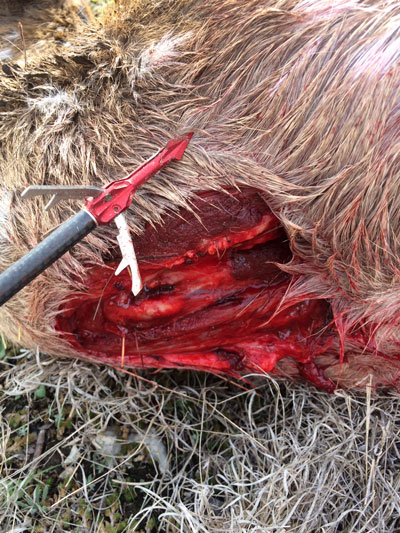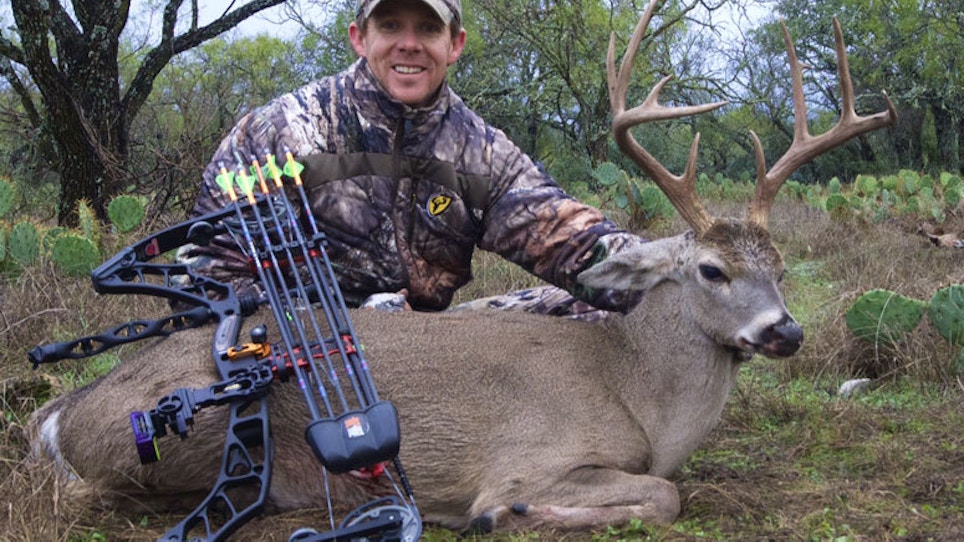One of the most satisfying parts of my job is testing equipment. I love it. The archery/bowhunting world is comprised of the most passionate people I know, and it’s that passion, that dedication to greatness, that makes our sport what it is.
Those of you that followed my November blog, "The Life Of A Bowhunter In Deer Season," know I spent a few days in the Lone Star State testing out Wac ‘Em’s new-for-2016 Expandable Broadheads. You know I harvested a beautiful whitetail buck and a free-ranging axis doe with the 3-Blade and a second axis doe with the 2-Blade. If you didn’t follow the blog, now you’re up to speed.
By now you’ve been flooded via print and online with the specs of these new expandable heads, so I will spare you the regurgitation. Instead, I will give you a rundown of an honest field test – a field test performed both in the hunting woods and on the archery range.
Accuracy
It’s no secret that Wac ‘Em prides itself on the accuracy of its fixed-blade heads. I’m happy to report these expandables follow suit. I shot my second axis doe at a distance of 56 yards, and the broadhead impacted the exact point at which I was aiming. Upon my return home to Colorado, I shot both the 2- and 3-Blade models into foam at distances ranging from 60 to 120 yards. They proved field-point accurate. In fact, my last 100-yard group fit inside the inner-ring of a paper plate. I credit much of this accuracy to the head’s aerodynamic nature. The broadhead itself is long but extremely streamlined.
Penetration
No, I didn’t shoot the head into concrete or wood at quartering angles, but I did blow completely through three Texas animals. My whitetail buck was shot at a distance of 26 yards, and the 3-Blade head blew through the buck’s lungs and stuck 5 inches (measured with a ruler) into the rock-littered hillside. My first axis doe was shot at a distance of 12 yards from a treestand. The arrow entered the doe just below the spine and exited through the bottom of the chest cavity. When she whirled to run, she snapped off the arrow and left 8.75 inches (measured with a ruler) buried in the ground. The blood loss was so severe she collapsed within 6 yards of the broadhead impact. 
My second axis doe was shot at a distance of 56 yards while spotting and stalking. The doe was slightly quartering toward me, and the head blew through the front shoulder and exited behind the left lung. I found the arrow 10 yards behind where the doe was standing. The broadhead was buried in an oak tree.
One reason both the 2- and 3-Blade penetrate so well is the head design. The front-deploying blades tuck in behind and below the head, allowing the head to start penetrating before the blades start to deploy. This boosts penetration greatly because the design prevents the loss of kinetic energy. As for the entrance and exit holes, you will just have to shoot them and see for yourself. Unreal!
Durability
Personally, I only shoot a broadhead once. As long as it holds up and does its job, I consider it durable. The good news: Aside from the 2-Blade head that was buried in the oak, I was able to fold the blades from the two other heads right back in their cutout tracks and slip a new band over them. Both were still sharp.
Want to know more? Look for additional information about these new heads in upcoming issues of both Bowhunting World and Archery Business magazines.






